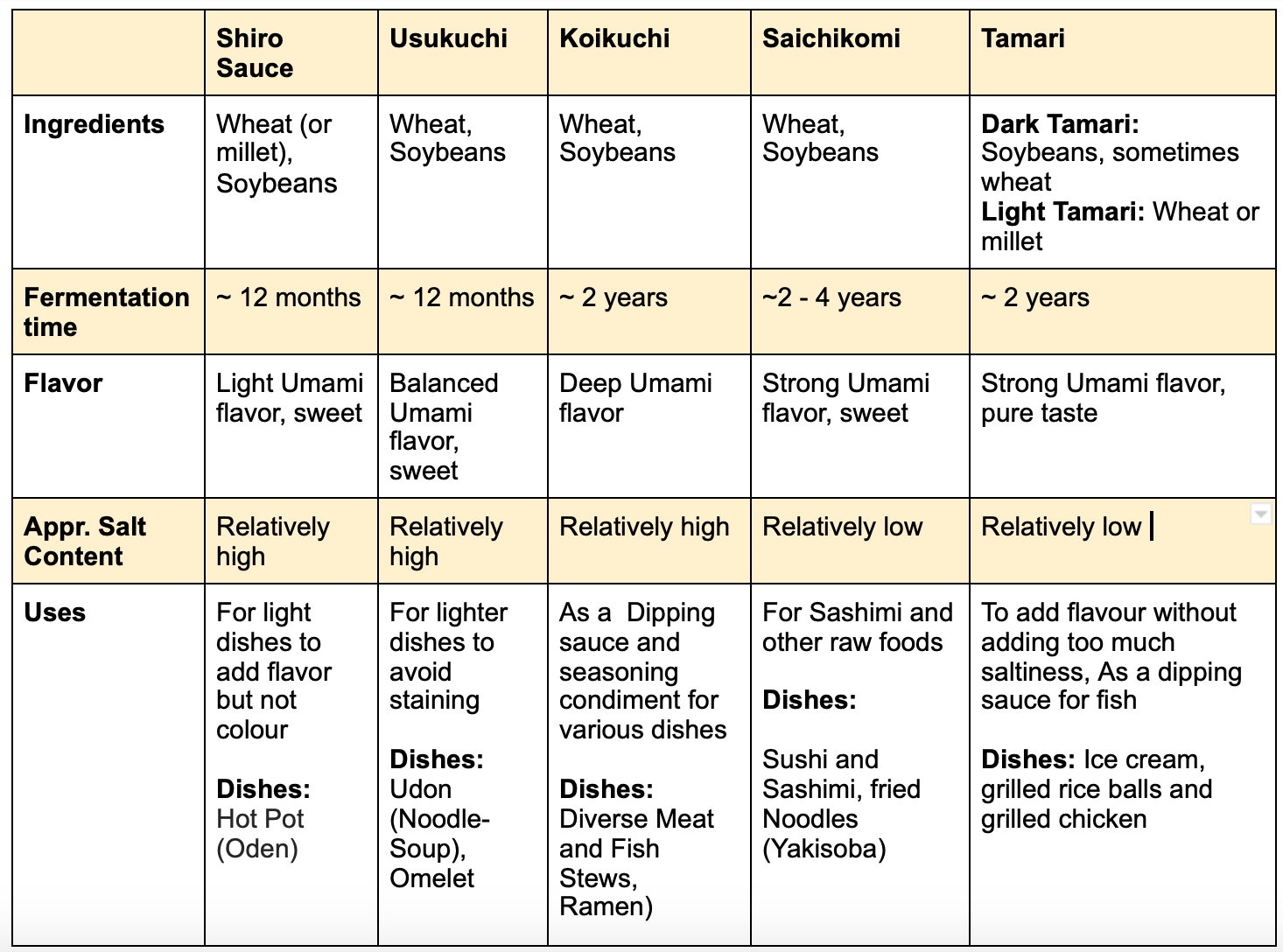Soy sauce is an indispensable element in East Asian cuisine. The Japanese characters for shoyu are as follows: 醤油. The word 醤 Sho means miso, or more precisely fermented bean paste, and the word 油 Yu means oil. The characters were transferred directly from Chinese. So in combination they mean something like "pressed from fermented bean paste" - ultimately what soy sauce is.
It is not just soy sauce per se that defines the taste of East Asian dishes, but it is the extensive variety of different types of soy sauce. Many countries around Asia, from Korea to China, have their own categories of soy sauce that have evolved alongside their food culture. Across cultures and borders, there are also various ways of producing soy sauce which has resulted in a diverse taste palate. In this article however, we focus exclusively on Japan, to show how diverse the production methods, fermentation, taste, and ingredients can be. As many Western supermarkets offer only a standard soy sauce, many people are not aware of the diversity of flavours, colours, and textures that soy sauces can come in. There, the fermentation time and the combination and ratio of ingredients is decisive for the umami flavor and colour of the shoyu. As such, we have arranged the shoyu types according to fermentation time and colour, beginning with the lightest one.
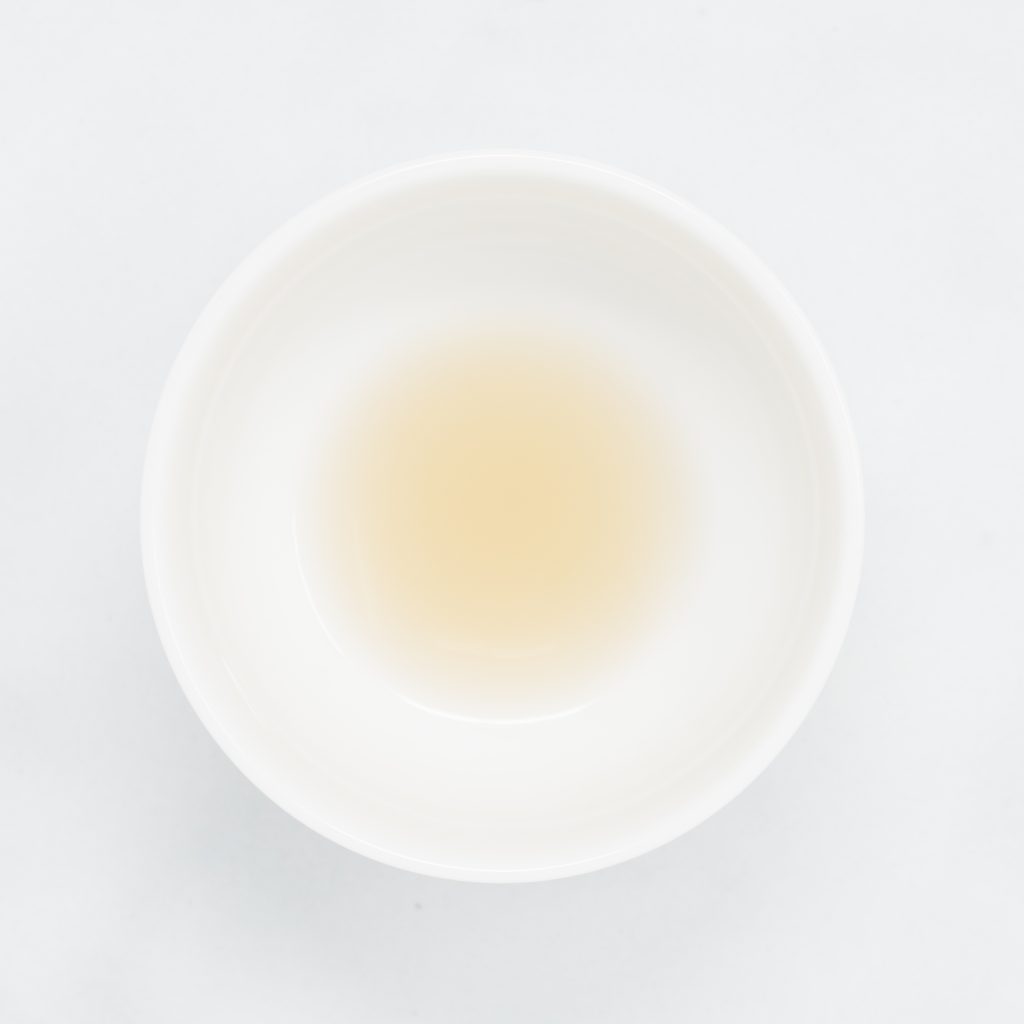
Shiro bedeutet übersetzt “weiß”. Der Name kommt daher, dass diese Sauce die hellste unter den Sojasaucen ist. Shiro Shoyu kommt ursprünglich aus der Aichi Präfektur.
Ingredients & fermentation
White soy sauce is produced with a relatively higher wheat content. Generally, wheat is added to soy, as enzymes released by the Koji convert it into simple sugars which provide energy for the Koji to live and contribute sweetness to the soy sauce. Some producers also use millet instead of wheat which essentially has the same effect but is gluten free. White soy sauce also has a short fermentation time compared to all other types of soy sauce, which also contributes to its light color. As such, it has slightly lighter Umami flavor than its darker counterparts.
Uses
Because of its light color it is often used as a condiment for light dishes. Compared to darker soy sauces, it doesn’t stain dishes but highlights their original colour. Due to its lighter Umami flavor, it is also used by chefs to add flavour to a dish without overpowering the dish. Small amounts of white soy sauce can also be used to replace salt. Some of the prominent Japanese recipes made with shiro shoyu are Osuimono (Clear broth with fish), Chawanmushi (savory steamed egg custard), and Oden (Japanese winter hot pot/stew). Generally, light shoyu is more common for use in broths and dressings and less for frying and cooking.
Product Example: Kibi Shiro Shoyu, Soba Shiro Tamari
Recipe Example: Soba Tamari Cucumber Salad
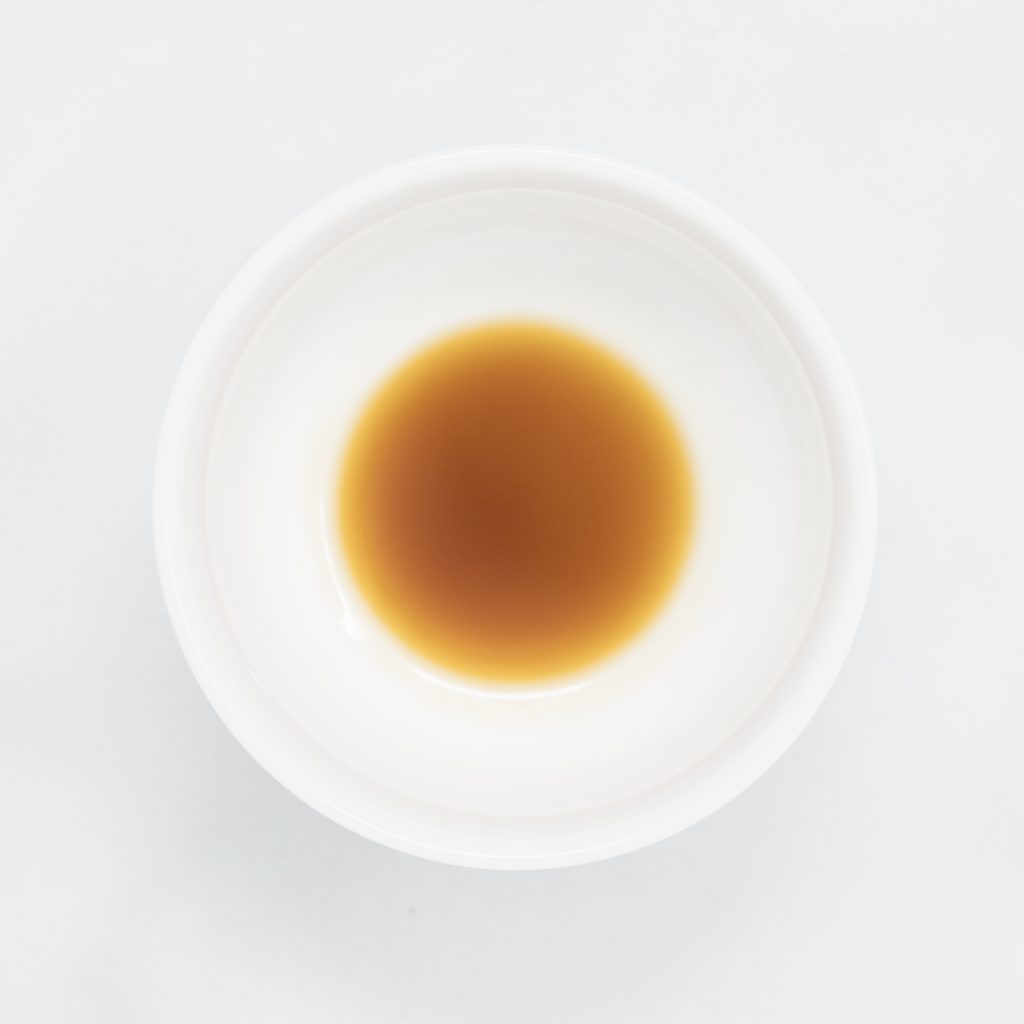
Usukuchi soy sauce originated in the Kansai region in Japan and today accounts for 14 % of domestic production. Usukuchi means “thin taste”. In the Kitchens of the imperial court, Usukuchi with its lighter colour and mellow taste was often the preferred choice. Even today, Usukuchi is still used primarily in Western Japan (Kyoto/Osaka) which used to be the centre of the royal palaces.
Ingredients & fermentation
Just like Koikuchi, Usukuchi is also produced from soybeans, wheat, and salt, but is usually fermented over a shorter period than Koikuchi.
Uses
Ähnlich wie Shiro Shoyu, wird Usukuchi häufig für helle Speisen verwendet, um deren Verfärbung zu verhindern. Sie ist beliebt als Dressing für Salate und als Dipping Sauce. Gerichte die üblicherweise mit Usukuchi gemacht werden sind Udon, eine Japanische Nudelsuppe, und Tamagoyaki, ein Omelett Japanischer Art.
Product Example: Einkorn Usukuchi Shoyu
Recipe Example: Ohitashi Spinach
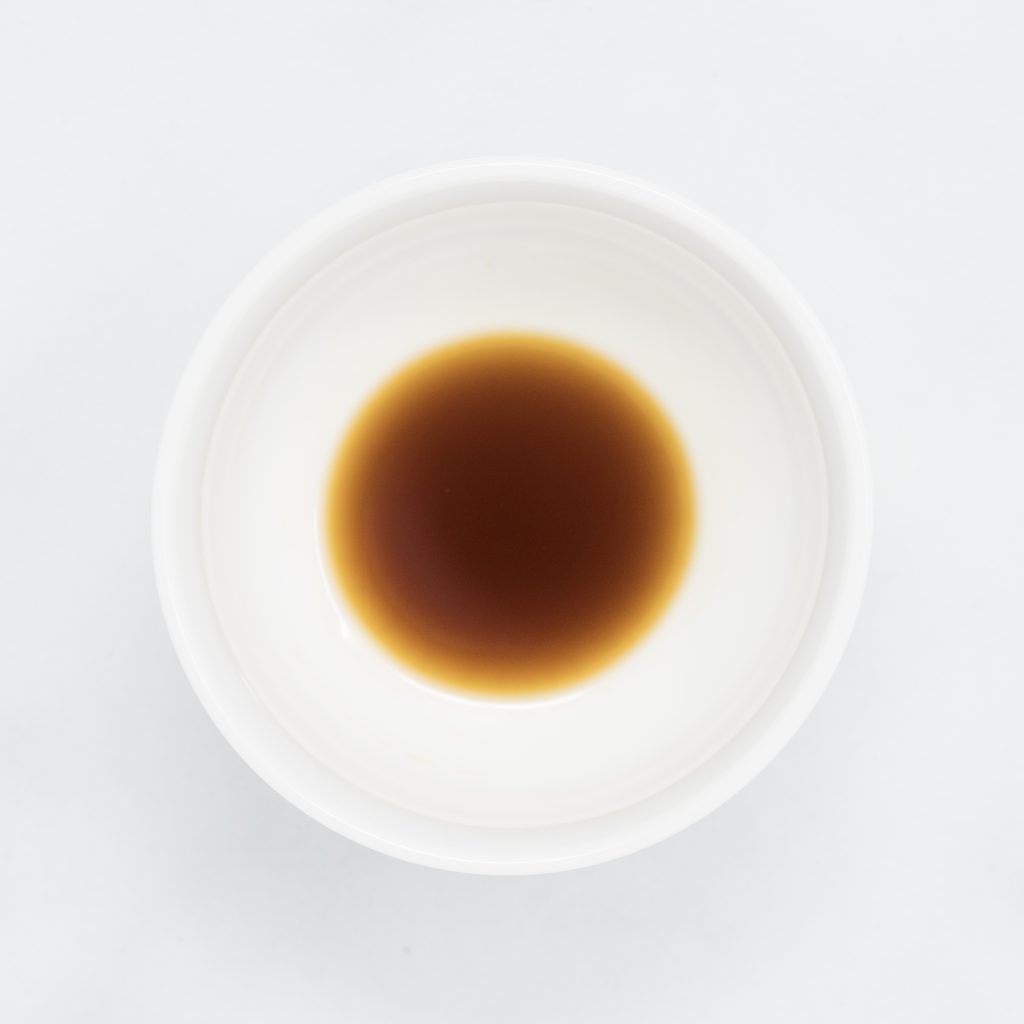
Koikuchi translated from Japanese means “thick taste”. Making up 80 % of all soy sauces on the market, Koikuchi is the most common kind of soy sauce in Japan. It is produced all over Japan, from Hokkaido in Northern Japan to Okinawa in Southern Japan. This is why it is often referred to as the “standard” soy sauce. Moreover, Koikuchi is the quintessential soy sauce that you can find on Western supermarket shelves.
Ingredients & fermentation
Koikuchi soy sauce is produced from equal amounts of soybeans and wheat. It is fermented over a long period of time, usually up to two years, which is where it derives its dark color from.
Uses
Koikuchi is an all-round player that is used for a variety of dishes. Koikuchi is often used in Sukiyaki, which is a Japanese style hot-pot, buri daikon (simmered daikon radish and yellowtail), and NikuJaga (meat and potato stew. Furthermore, it is also used for many ramen recipes. Generally, darker shoyu types such as koikuchi are generally used for cooking and frying to achieve a dark amber color in stir-frys or rice/noodle dishes.
Product Example: Einkorn Koikuchi Shoyu
Recipe Example: Teriyaki Tofu
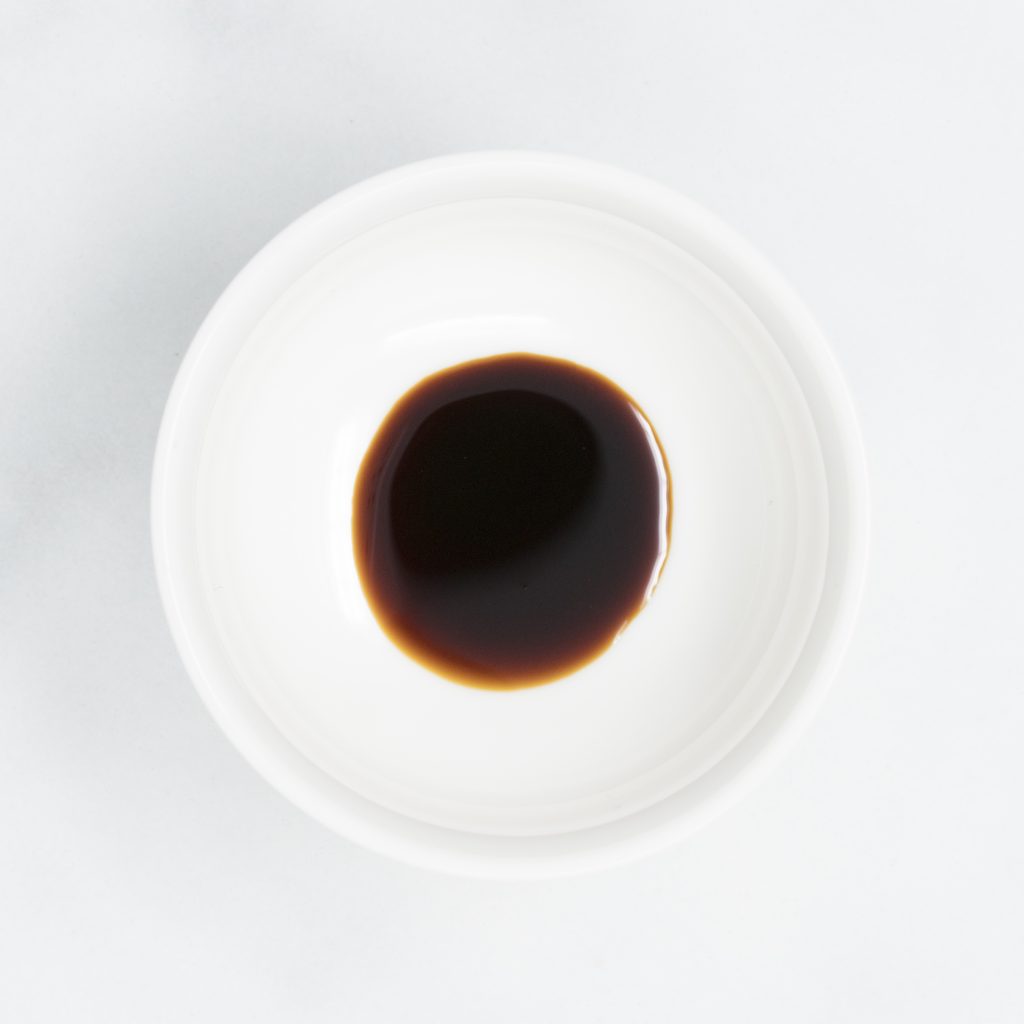
This soy sauce is produced in the Yamaguchi prefecture in Kyushu. Due to the fact that the production of Saishikomi requires a lot of ingredients and time, it only accounts for 1 % of the total production in Japan.
Ingredients & fermentation
Translated from Japanese, Saishikomi means "double brewed". This means that first, a basis of fermented Soy, wheat, salt, and water is produced. Then, a second base is made, consisting of only soy and water. This base is then added to the first base and everything is fermented together. For Saishikomi, the same amount of soybeans and wheat are used. As the sauce is double brewed, the fermentation time is very long. Some Saishikomi Shoyus are even brewed over a period of four years.
Uses
Saishikomi is often said to have an authentic and pure Umami taste. This can be attributed to the fact that it is less salty, since the second base contains no salt, only soy beans and water. With its low salt content and intense umami flavor, Saishikomi is a popular choice for adding flavor to raw foods and for consumption with sashimi.
Product Example: Yamaroku Sojasauce
Recipe Example: Noodles with shoyu and spring onion oil
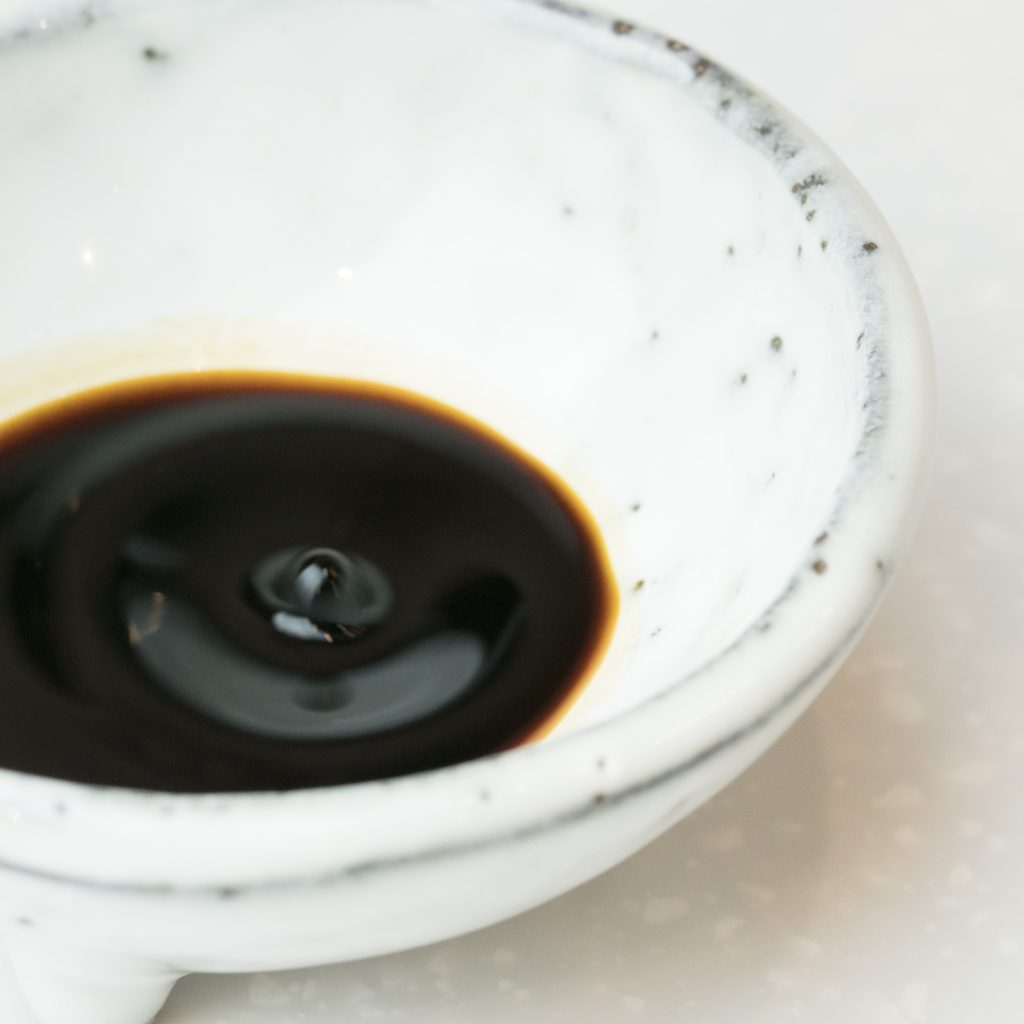
Tamari is mainly produced in the Aichi prefecture, where it initially originated, and in the Chubu region. Tamari actually first originated as a byproduct of Miso. The word Tamari translates into “puddle”, since it accumulates in the barrel as Miso is fermented and is squeezed out of the soybean mash in the end. It is often said about Tamari, that it comes closest to the origins of soy sauce.
Ingredients & fermentation
When it comes to Tamari, you have the choice between dark and light Tamari. The dark version is often known as the gluten free alternative to regular soy sauce, since much of the Tamari on the market is produced with little or no wheat. It has a lower salt content and is also made with less water than regular soy sauce, resulting in a thicker consistency. However, Tamari can also come in lighter colors, which is also referred to as Shiro Tamari. This type of Tamari are made with only wheat or as a gluten-free alternative, with buckwheat. Essentially, what differentiates Tamari from soy sauce is not its wheat content but the way it is produced.
Uses
Due to its high soybean content, Tamari has a high umami flavor and a nuanced taste. It is particularly popular for dishes containing fish, as it wont overbear the fish with saltiness. Tamari can also be used in soups, stews, stir-frys and marinades. It is also used to finish off some dishes and give it a reddish brown colour and shine, e.g in Teriyaki dishes. Some popular dishes that contain Tamari are Yakitori (grilled skewered chicken) and Yaki-Onigiri (grilled rice balls with sauce). Moreover, Tamari is often the go-to shoyu for those who follow a gluten free diet.
Product Example: Ganko Tamari
Recipe Example: Teriyaki Tofu
At last, we have summarized all the Information for you in a table.
